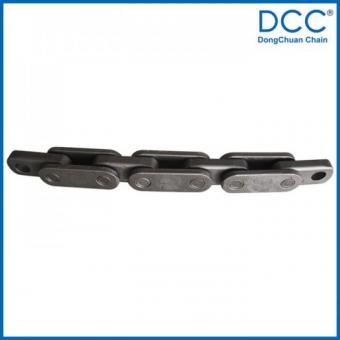- ADD:Hongzhuang Road, East Town Industry Area, Yaoguan Town, Wujin District, Changzhou City, Jiangsu Province, PR. China

- Mobile Phone:+86-15961181358
- Fax:+86-519-88700526
- E-mail:wk1358@dongchuan.cn
Take you to understand the causes of industrial roller chain failure and prevention strategies
Have already visited 64302/27/2023Rollers are a key part of the production process in any industry, allowing raw materials and other items to move between different stages of production. Therefore, a sudden industrial roller chain failure during the manufacturing process can be very painful. It can disrupt your entire supply chain and put a financial burden on you in terms of repair and maintenance costs. However, all companies should be prepared for industrial roller chain failure, because it can happen at any time. And the best way to prepare for industrial roller chain failure is to understand what causes it and the best strategies to proactively prevent and fix it.1. industrial roller chain overload.

One of the main causes of industrial roller chain failure is the constant high load it is subjected to.
industrial roller chains can only carry a certain amount of weight. However, most factories and businesses try to overload industrial roller chains to increase production or maximize efficiency. Due to the excessive load on the chain, pinholes begin to expand, eventually leading to torn and broken links.
In most cases, you can also see pins breaking under weight due to the load and a problem called wear. Wear occurs when two parts rub against each other and eventually fall off due to lack of friction.
If you consistently experience industrial roller chain failure, look for the load applied to the plate. Sometimes, you may find that only one side of the plate is worn, which means it is not aligned. To solve this problem, you may need to perform new calculations and make some design changes or reduce the overall load on the industrial roller chain.
Otherwise, you can replace the chain with a more durable chain, especially one that can handle the required load. In addition, you can ensure smooth torque transmission between the two shafts by using larger sprockets in the industrial roller chain or by getting a larger chain altogether. You can also use a leveling device to check for misalignment. Once fixed, you can tighten the bearings and sprockets so that this does not happen again.
2. Palate fatigue on the industrial roller chain.
Another common cause of industrial roller chain failure is the so-called plate fatigue. The plates have a certain fatigue load that they can withstand. However, when they are overloaded, the fatigue load begins to produce cracks perpendicular to the industrial roller chain shaft. This usually occurs when the heaviest load is applied to the joint perpendicular to the axis of motion. As a result, stresses begin to build up perpendicularly around the pinhole. It is only a matter of time before the crack expands and leads to complete fracture of the entire link.
To prevent this, you need to determine where the maximum load is applied. For example, if you have a hydraulic motor, industrial roller chain fatigue may be caused by the stop function. In this case, you will have to look for a cross-port relief device to relieve the pressure. Or, if there is a problem during start-up, you can install a proportional valve that will immediately accelerate the machine to full speed.
However, the motor may not give you much of a chance to address plate fatigue. Therefore, you can resort to increasing the size of the chain, getting a larger sprocket or adding a flywheel to the mechanism. Whichever method you use, you will have to replace the chain when you perform this operation, because it has developed cracks.
3. Rust and corrosion of the industrial roller chain.
Rust and corrosion are the worst enemies of any machine that contains industrial roller chains, and they are also very common. You may find that a perfectly functioning and smooth industrial roller chain may suddenly break at the links, interrupting your operation. Upon closer inspection, you may find the chain plates arcing in contact with corrosive substances such as acids or other aggressive chemicals.
Another way to identify rust on a industrial roller chain is to look out for surface pitting, which can form rust on metal surfaces. You can observe this on the side of the chain links and plates. At first, you may notice a light red color, which can cause the chain to kink. The rust begins to spread to the links, pins and sleeves. By the time you see it, it may have wrapped around the outside of the sprocket, at which point most of the damage is complete.
To fix this problem, you need to remove the entire industrial roller chain and check the entire mechanism for substances or chemicals that cause corrosion. It could be your lubricant, especially if it contains water or acid. You may need to change the lubricant or switch to a V-belt or serpentine mechanism.
4. Machines running at high speed.
Another very common cause of industrial roller chain failure is high speed. The critical speed of the machine is essential in this regard, as it causes the onset of machine vibration. Vibration is never good for your industrial roller chain mechanism. The amount of vibration and wear a chain can withstand depends on the length of the chain and its tension level.
The best way to alleviate this problem is to add support to the chain so that it does not move. The support will minimize the vibration of the industrial roller chain and the tensioner will do the same.
These are some of the most common causes of industrial roller chain failure and the best way to avoid them is to perform routine and periodic inspections as well as preventive maintenance. If you need more detailed information, feel free to contact us!







View More(Total0)Comment Lists